Would you take a trip to an inflatable space station?
Some of the richest people in the world are looking to space to make their mark but one unassuming American hopes to make his name with the first inflatable space hotel, reports Steven Cutts

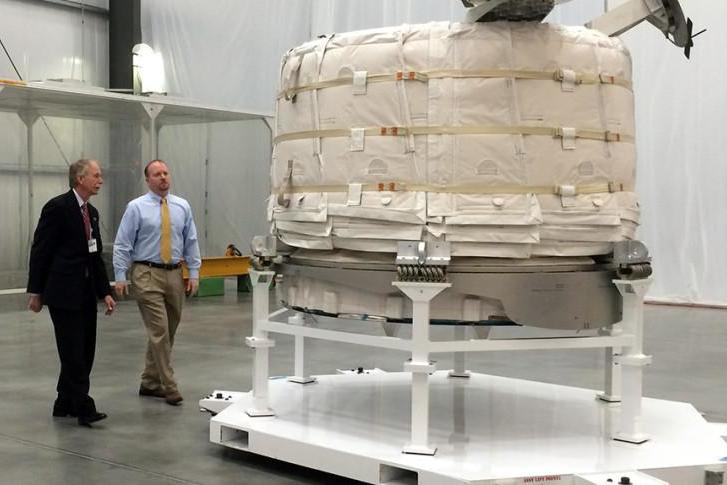
These days, every self-made billionaire on the planet seems desperate to make their presence felt. Bill Gates – who made his money in software – has now spent an astonishing sum of money trying to wipe out Polio. In sharp contrast, the likes of Jeff Bezos (Amazon) and Richard Branson (Virgin) have tried to carve a niche for themselves in the world of private spaceflight.
If any of these pastimes have a precedent then it’s probably the late great Howard Hughes, who inherited a reasonably large fortune from his father and went on to gain prominence in such wildly different fields as sex, aerospace and Hollywood. In contrast to his later day rivals, Hughes liked to direct his own movies and sit at the controls to his own aircraft, flying the thing in person.
This kind of behaviour can be difficult to understand and it’s a fair bet that at least one of the driving forces behind it is the desire to draw attention to yourself and, in that sense, the man who has been least successful in this game is the little known figure of Robert Bigelow, a moustached, unassuming American who made his money in the entirely unglamorous world of budget hotels and decided – quite late in life – to build the first hotel in outer space.
Scientists have been talking about space stations for the last 100 years with some of the early designs being pretty fanciful. In the early 1970s, the very first inhabitable structures were launched into low Earth orbit and gave a reasonably good account of themselves. Both the American Skylab and the Soviet Salyut managed to prove that man could survive quite comfortably in the weightless conditions of space with the proviso that there is a discernible medical price that the astronauts have to be prepared to pay.
Finally, after several decades of intense rivalry, the Cold War ended and we had the International Space Station. The ISS was real science fiction stuff come true but the public has never warmed to this particular adventure in the same way that they did the Apollo Moon landings. More recently, Tom Cruise announced that he was hell bent on boosting the profile of the ISS by shooting a new action movie inside the station. Watch this space.
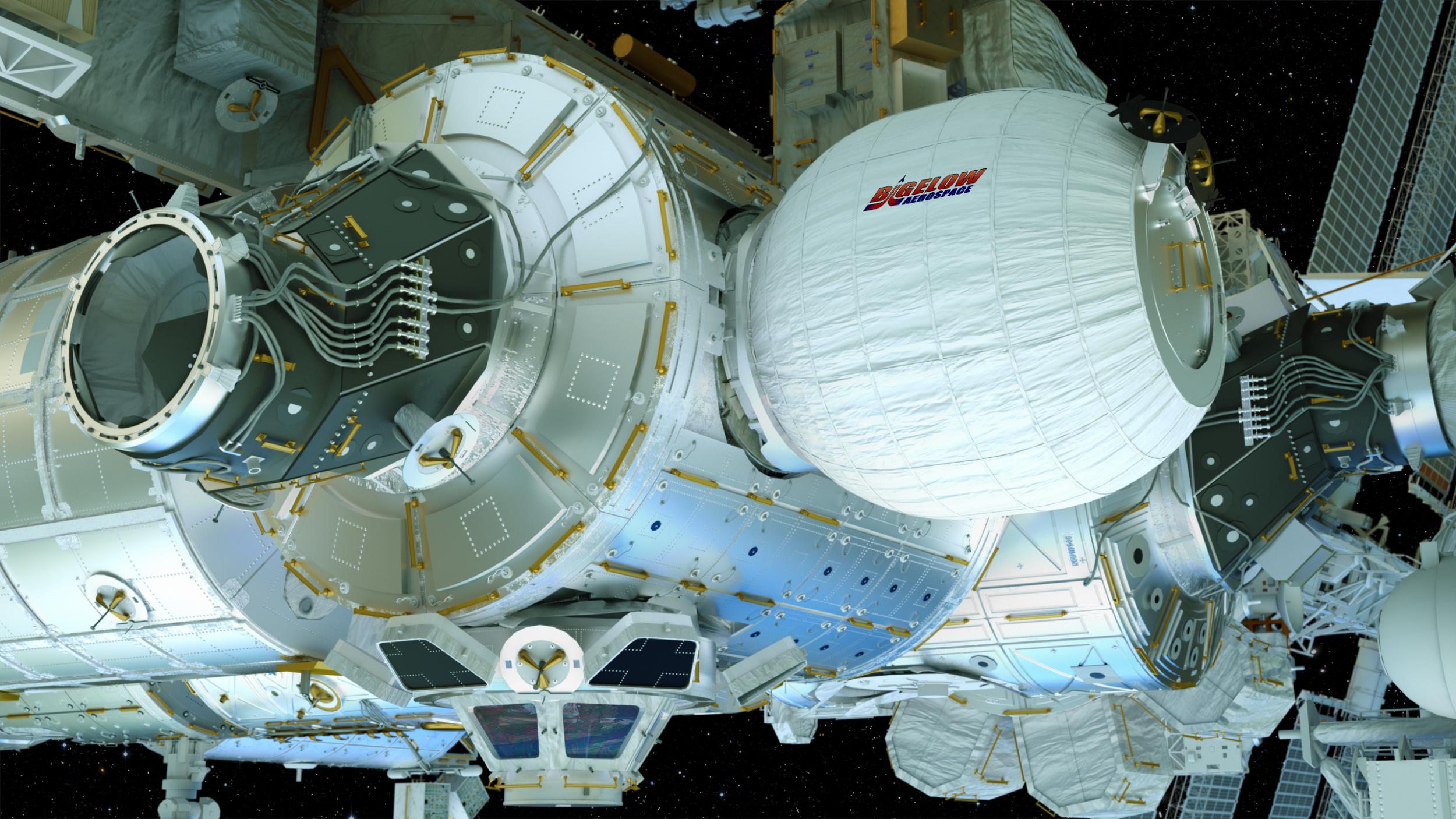
The ISS is, however, a mosaic of many different units each of them blasted skywards on separate boosters. How will we replace the current space station when it reaches the end of its life expectancy and how will we build something that is precipitously better?
Well, for several years now, there has been interest in building an inflatable space station. Yes, it’s time for that big bouncy castle in the sky and the project is close to being a reality. More than one design has been built on the surface of this planet and a good few prototypes have already been tested in the vacuum of space.
In the late 1990s, Bigelow bought the rights to a design that had been previously abandoned by Nasa. He started to talk about a private space station where governments or very rich individuals would pay good money for a two-week stint in zero gravity with all mod cons and a beautiful view of planet Earth. Since then, his team has built a full-scale mock-up and invited Nasa officials and television journalists to roam around.
The advantage of an inflatable space station is the size. A relatively small core module could be shot out into space and then inflated in orbit to create a pressurised structure. Such a space station might be very large indeed. After decades of astronauts being selected for their ability to stay sane in a confined space, they would suddenly be free to float around in a vast internal playground.
When Bigelow first studied the original Nasa design for such a construct, he became convinced there would be a market for this project. Some of his more ambitious designs might be able to house as many as 16 people, far more than any other space station yet launched. It’s not clear how many members of the super rich would be willing to fork out $52 million for this kind of experience and I can’t help but feel that once it’s been done a few times, the target demographic will begin to lose interest and decide to buy themselves another super yacht instead.
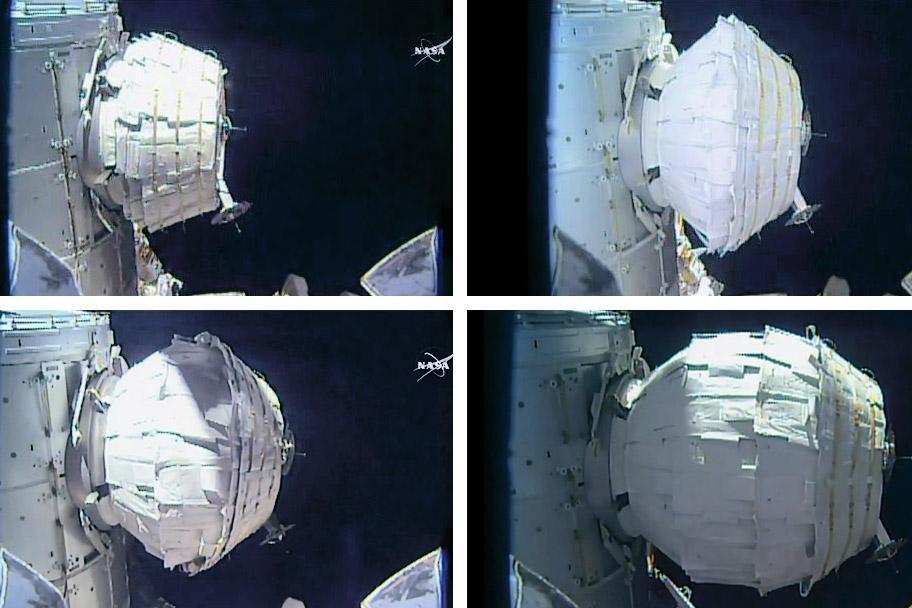
Bigelow’s vision is further compromised by the fact that he doesn’t own a space-ship to shuttle his would-be customers to their out-of-this world destination. In that sense, his plans have been held back by the repeated delays that have beset the American manned space flight programme in recent years. Now, with the success of SpaceX and the advent of reusable rocket boosters, there’s definitely a very small chance that he might succeed.
But Bigelow isn’t alone in this game. America isn’t short on hi-tech start-ups and the Sierra Nevada Corporation is trying to make a name for itself in the world of outer space. It has been working on a mini space shuttle for years and hopes to start flying the thing in 2021. Sierra Nevada has also designed and built a prototype inflatable space station that could orbit the Moon. Nasa wants to build a space station that would orbit the Moon as part of its plan to return astronauts to our nearest neighbour – the so called Lunar Gateway Station – and Sierra Nevada is one of several companies now bidding for this project.
Frolicking in zero gravity is bound to be fun and the views from outer space are said to be life changing in themselves
What all of these designs have in common is the belief that we could launch a relatively small payload and then inflate it in outer space. The main concern here is that the station might sustain a puncture and the air would leak out, thus killing the astronauts. A tiny micrometeorite flying through outer space could easily strike a space station and punch straight through the outer skin.
This sort of thing has been happening on the ISS for years. Remember that a satellite in low Earth orbit is travelling at five miles per second and not all the orbits are parallel. If it hits a grain of sand coming in the opposite direction then the potential for damage is significant. The vast number of satellites and rocket stages that men have discarded in low Earth orbit has merely added to this risk and in some circles, there is genuine apprehension that we might lose access to low Earth orbit altogether for precisely this reason.
The engineers involved in these projects now believe that this can be avoided by building the station out of materials such as Kevlar. Kevlar was developed in the 1960s and has long been used to produce bullet proof vests. The advantages of this kind of material are further enhanced if we coat the station in multiple layers of the same material. In principle at least, an inflatable habitat on the Moon or Mars could be further enhanced by pouring Moon dust in between the layers to further insulate and protect the crew.
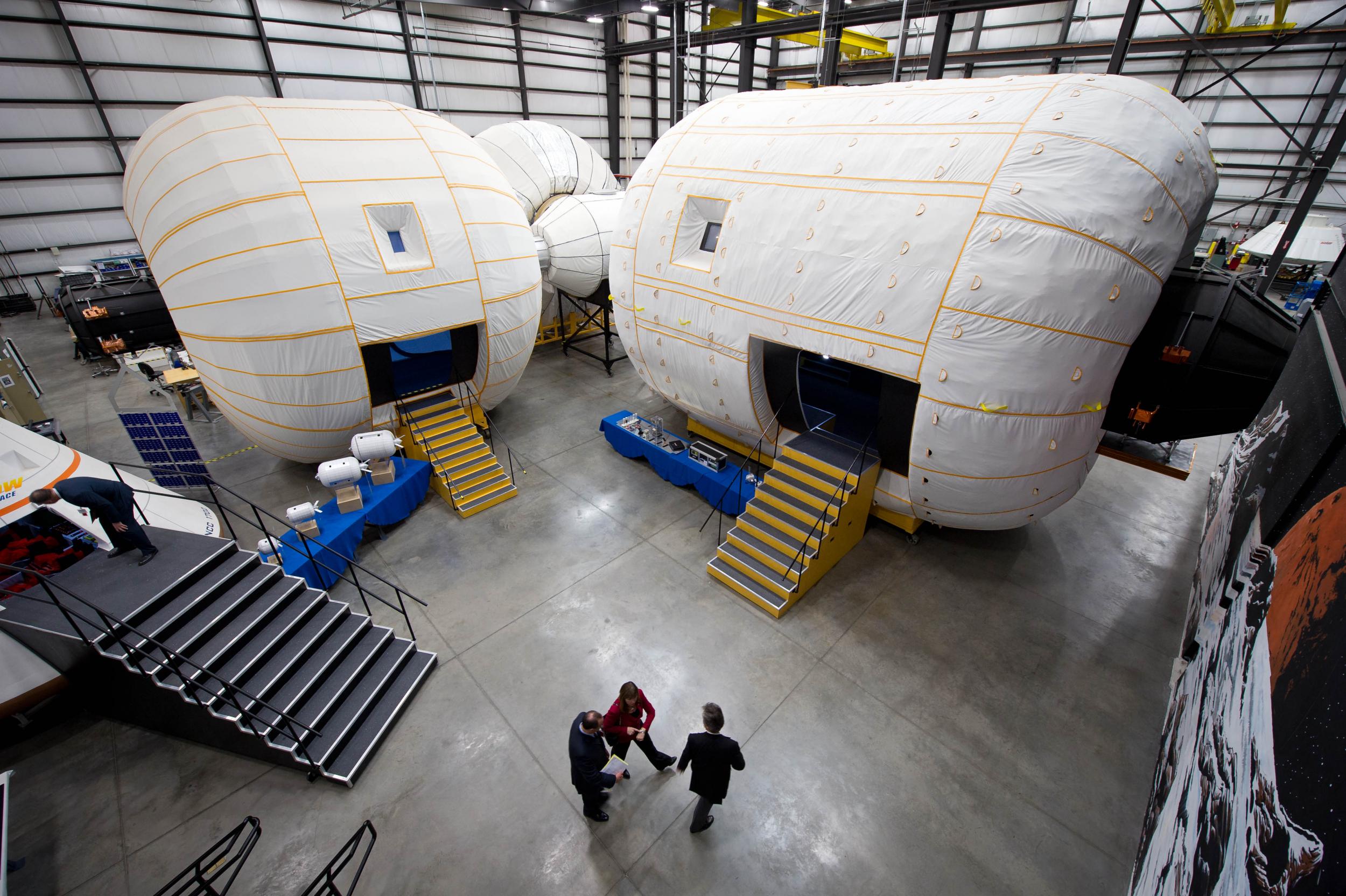
If this sort of thing sounds like a project for the far future, you’d be right. However, in 2016, Nasa launched a prototype bubble manufactured by Bigelow Aerospace and attached it to the side of the ISS. The bubble was then slowly inflated to maximum size. Since then, successive crews have monitored its performance. Instruments test for air leaks and micro-meteorite impacts. In particular, scientists are interested in the radiation level inside the chamber and it is for this reason that so far, the astronauts on the ISS haven’t used it for crew accommodation.
Deep space is awash with ionizing radiation. It has long been understood that much of this radiation is blocked by the Earth’s atmosphere, but it was only in the 1960s that we fully understood the role of the Earth’s magnetic field. The American scientist James van Allen became the first man to describe the radiation belts that still bear his name. Using data sent back by Earth early space probes, it became apparent that most of the electrically charged radiation from the Sun changes direction as it approaches the Earth’s magnetic field. In effect, there is a zone of maximum radiation several thousand miles from the Earth’s surface, most of it safely above the astronauts who live in the ISS.
If we want to send people back to the Moon or other planets, the astronauts would be exposed to the full fury of the deep space environment. A six-month tour on the ISS involves accepting a radiation dose many times greater than that which we experience here on Earth but the ISS is inside the Van Allen radiation belts and is effectively protected from the solar wind by the Earth’s magnetic field. As soon as we fly beyond the Van Allen radiation belt, the intensity of radiation soars. Scientists have long tried to envisage a way to block this radiation and protect the astronauts from its impact. Needless to say, this isn’t easy.
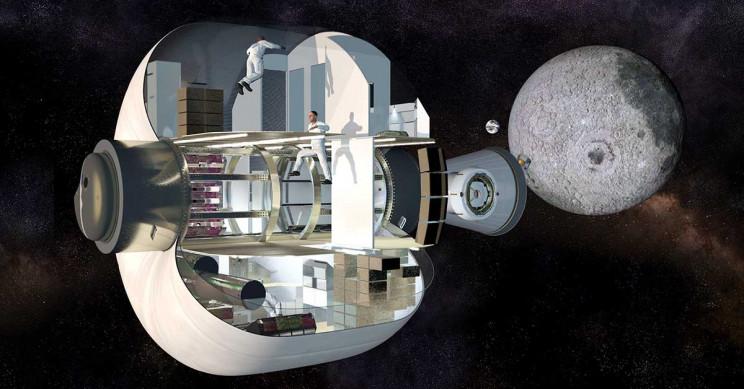
A human crew living on the Moon would have substantive protection during the 14-day lunar night, but when the Sun rises and 14 days of uninterrupted sunlight begins, the radiation dose accumulated in this time would be substantive. It seems likely that a long-term base on the Moon might be buried under several feet of rocks or Moon dust to protect the crew from radiation. And every hour that a man spends on the surface of the Moon would have to be carefully logged.
The Apollo astronauts endured all this in good spirits but their missions rarely lasted longer than 14 days and at least one man began to vomit, furiously just after he passed through the Van Allen radiation belt. When we return to the Moon, Nasa intends to keep a crew alive for up to six months and in this scenario, the risks will change considerably. Will a free floating space station in Lunar Orbit offer adequate protection to a crew that is preparing to board any future landing craft?
Coating the station with solid lead sounds like an effective solution, but the heavy metal might render the entire structure too massive to blast off. There’s even evidence that some of the ionizing particles that hit the space station fragmentate like shrapnel as they hit the solid surface of the vehicle and actually cause more damage to the human body. Packing the periphery of the station with food supplies, fuel or instrumentation is another popular suggestion but the radiation dose for the crew would still be many times greater than on the ISS.
It is now well established that an astronaut who spends six months on the ISS experiences a small but permanent reduction in his visual acuity. We don’t fully understand why this happens but if it's linked to the radiation dose then this effect may be magnified on the Moon. Could any future lunar explorer be reasonably expected to endure more than one stint on the lunar surface in the course of his career? This remains to be seen.
Of course, there are other solutions to these problems. Man isn’t easily beaten and medical science may come up with drugs that can counter the effects of radiation on the human body and we may simply endure the radiation and swallow the anti-dote. For the wannabe millionaire space adventure who fancies 10 days in low Earth orbit, the radiation dose is more than tolerable. Frolicking in zero gravity is bound to be fun and the views from outer space are said to be life changing in themselves. Given that the cost of launching a human crew into low Earth orbit are finally falling, Bigelow and his kind might well be on to the next big thing.
Join our commenting forum
Join thought-provoking conversations, follow other Independent readers and see their replies
Comments